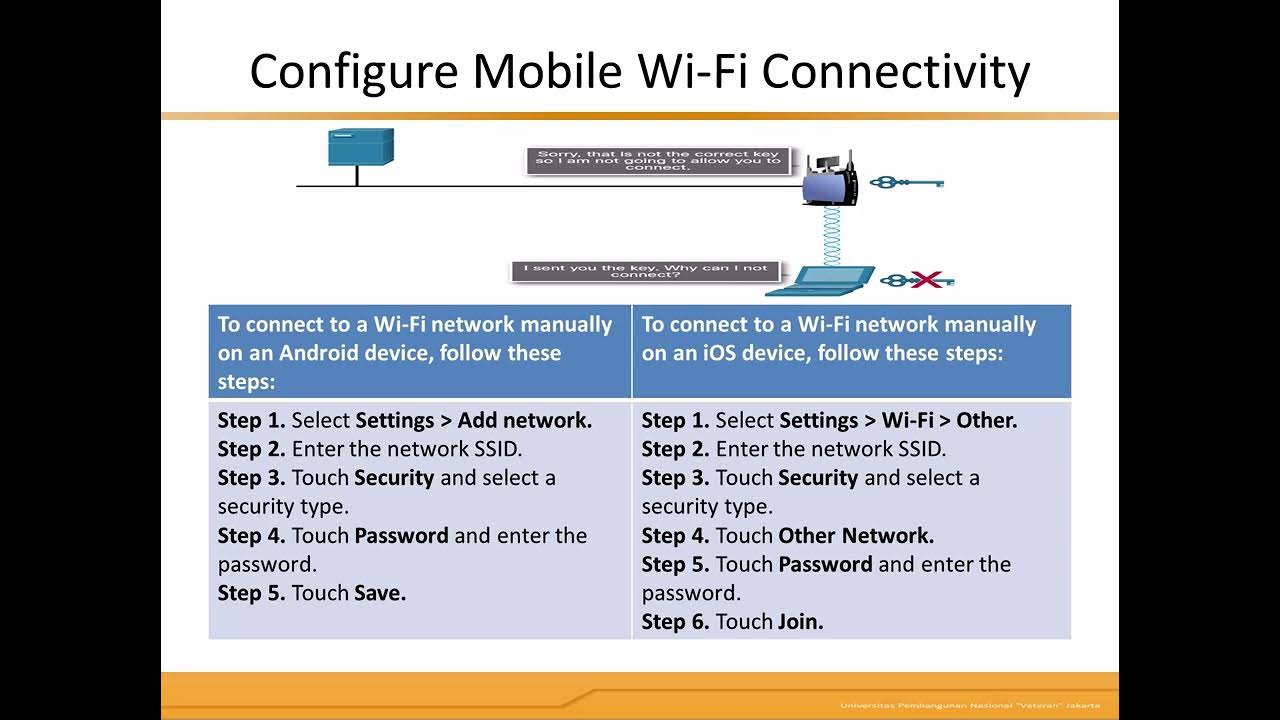How Does Wi-Fi Work? | Earth Science
Summary
TLDRWi-Fi, a form of electromagnetic radiation, enables the transmission of vast data through the air, allowing us to connect devices wirelessly. It operates using radio waves with a wavelength of about 12 cm, which are emitted in a dome shape by routers, creating a network of signals that can be visualized as a field of circus tents. Despite interference from objects and other Wi-Fi signals, Wi-Fi paint can be used to block such disruptions. The technology transmits instructions in the form of binary code, with each signal representing a six-digit code, allowing for complex data to be sent at the speed of light.
Takeaways
- 📡 Wi-Fi is a form of electromagnetic radiation, similar to visible light and radio waves, but with a wavelength of about 12 cm.
- 🌐 Electromagnetic radiation doesn't require a medium to travel, unlike heat, and Wi-Fi can penetrate various materials.
- 🌌 Wi-Fi signals are emitted in a dome shape, typically covering an area of 20 to 30 meters.
- 🏙️ In a city, if visible, Wi-Fi signals would create an immense, tent-like network overhead.
- 🚫 Wi-Fi signals can be obstructed by physical objects and interfered with by other Wi-Fi signals, causing signal degradation.
- 🛠️ Wi-Fi paint is available to block interference from other signals, enhancing the quality of a Wi-Fi network.
- 📶 Wi-Fi signals carry instructions in the form of binary code, with 'on' and 'off' states representing data.
- 🐶 Transmitting complex data like a video involves a vast number of binary signals, but they are sent quickly due to the speed of light.
- 🔢 Each Wi-Fi signal is encoded with a six-digit code, using changes in wave height and starting points to represent 'on' or 'off'.
- 💡 Gaps between signals and wave symbols function like spaces in writing, allowing complex instructions to be sent and understood by devices.
Q & A
What is Wi-Fi and why is it considered miraculous?
-Wi-Fi is a type of electromagnetic radiation that allows us to send huge amounts of data through the air, enabling us to connect to the internet wirelessly, even in places without physical network infrastructure.
How does Wi-Fi relate to other types of electromagnetic radiation?
-Wi-Fi is part of the electromagnetic spectrum, which includes visible light, radio waves, X-rays, and gamma rays. What differentiates them is the wavelength; Wi-Fi has a wavelength of about 12 cm.
Why doesn't Wi-Fi radiation pose a health risk like gamma rays?
-Wi-Fi radiation is non-ionizing, meaning it doesn't have enough energy to remove tightly bound electrons from atoms, unlike ionizing radiation like gamma rays that can cause damage to biological tissues.
How does the wavelength of Wi-Fi affect its transmission?
-Wi-Fi's wavelength, being relatively long at about 12 cm, allows it to bounce around objects, which is why it can penetrate walls and other obstacles, but it can also be blocked or interfered with by these objects.
What does a Wi-Fi signal look like if it were visible, and how far does it reach?
-If Wi-Fi signals were visible, they would appear as pulses in a dome shape about 20 to 30 meters across, emitted by a router.
Why might you experience a strong Wi-Fi signal on one floor but a weak signal on another?
-Wi-Fi signals can be affected by the objects they encounter, such as concrete or wood, and interference from other Wi-Fi signals, which can cause signal degradation or delay.
What is Wi-Fi paint and how does it help with Wi-Fi signals?
-Wi-Fi paint is a product that can block other signals from interfering with your Wi-Fi signal, thereby improving the strength and reliability of your Wi-Fi connection.
How does Wi-Fi transmit complex data like videos?
-Wi-Fi transmits data by converting instructions into a binary code of on and off signals. These signals are then coded into the electromagnetic waves, allowing for the quick transmission of complex data like videos.
What are the two different states used to transmit data in Wi-Fi, and how are they represented?
-In Wi-Fi, the two different states used to transmit data are on and off, which can be represented by changes in the height and the starting place of the wave, as well as gaps between the pulses.
What is the significance of the six-digit code in Wi-Fi signals?
-Each Wi-Fi signal has a six-digit code that, along with changes in wave height and starting position, determines whether the digit is on or off, allowing for the transmission of complex instructions.
What are the two layers covered in electrodes thinner than a human hair, and why are they important?
-The two layers covered in electrodes thinner than a human hair are part of the Wi-Fi technology's underlying hardware. They are crucial for the transmission and reception of Wi-Fi signals, enabling the conversion of digital data into electromagnetic waves and vice versa.
Outlines

This section is available to paid users only. Please upgrade to access this part.
Upgrade NowMindmap

This section is available to paid users only. Please upgrade to access this part.
Upgrade NowKeywords

This section is available to paid users only. Please upgrade to access this part.
Upgrade NowHighlights

This section is available to paid users only. Please upgrade to access this part.
Upgrade NowTranscripts

This section is available to paid users only. Please upgrade to access this part.
Upgrade NowBrowse More Related Video

Jaringan Komputer Paling Sederhana | Tutorial Belajar Online Lengkap CISCO CCNA 200-301 Part 2

Wireless and Mobile Network

Sai come funziona il Bluetooth e a cosa serve questa tecnologia?

How does WiFi work - Easy Explanation

Cara Setting TP Link WR840N Pakai Mode Range Extender ( Memperluas Wifi ) - Tutorial Pemula

Cara Kerja Internet (BASIC TCP/IP)
5.0 / 5 (0 votes)